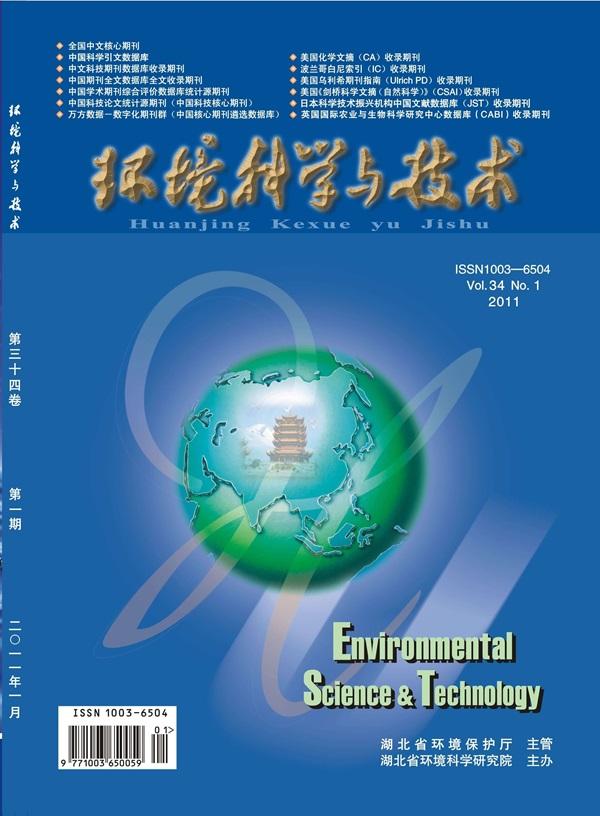Sustainable Food Waste Management in Anaerobic Digesters: Prediction of the Organic Load Impact by Metagenome-Scale Metabolic Modeling
IF 10.8
1区 环境科学与生态学
Q1 ENGINEERING, ENVIRONMENTAL
引用次数: 0
Abstract
The increasing urbanization has led to rising waste and energy demands, necessitating innovative solutions. A sustainable food waste management approach involves anaerobic codigestion with sewage sludge, enhancing biogas production while managing waste. Although this technology has been successfully tested, the biological mechanisms determining its efficiency are still poorly understood. This study leverages genome-scale metabolic modeling of 138 metagenome-assembled genomes to explore species interactions in lab-scale anaerobic reactors fed with sewage sludge to increasing proportions of food waste. The models showed positive correlations with experimental biogas production (CH4: r = 0.54, CO2: r = 0.66), validating their reliability. The dominant methanogen, Methanothrix sp., adapted its metabolism based on feedstock, affecting methane yields, which ranged from 2.5 to 3 mmol/g of volatile solids·h with sewage sludge to 10–14 mmol/g of VS·h with high food waste. The integration of extracellular enzymes into the models highlighted the role in methane production of pectin degradation, protein hydrolysis, and lipid metabolism, mediated by Proteiniphilum sp., Kiritimatiellae sp., and Olb16 sp. The study identified 475 mutualistic interactions involving amino acid, hydrogen, acetate, and phosphate exchange and 44 competitive interactions in hydrolytic and fermentative processes. These insights can help optimize anaerobic digestion and sustainable waste management in urban settings.

城市化进程的加快导致对废物和能源的需求不断增加,因此需要创新的解决方案。一种可持续的食物垃圾管理方法是将污水污泥进行厌氧协同消化,在管理垃圾的同时提高沼气产量。虽然这项技术已成功通过测试,但人们对决定其效率的生物机制仍然知之甚少。本研究利用 138 个元基因组组装的基因组尺度代谢模型,探讨了在实验室规模的厌氧反应器中,物种与污水污泥和不断增加比例的食物垃圾之间的相互作用。模型与实验沼气产量呈正相关(CH4:r = 0.54,CO2:r = 0.66),验证了模型的可靠性。主要的甲烷发生器 Methanothrix sp.根据原料调整其新陈代谢,影响甲烷产量,从污水污泥的 2.5 至 3 毫摩尔/克挥发性固体-小时到大量厨余的 10 至 14 毫摩尔/克挥发性固体-小时。将细胞外酶纳入模型突出了果胶降解、蛋白质水解和脂质代谢在甲烷生产中的作用,这些作用是由 Proteiniphilum sp.、Kiritimatiellae sp.和 Olb16 sp.介导的。 该研究确定了 475 种涉及氨基酸、氢、醋酸盐和磷酸盐交换的互利相互作用,以及 44 种水解和发酵过程中的竞争性相互作用。这些见解有助于优化城市环境中的厌氧消化和可持续废物管理。
本文章由计算机程序翻译,如有差异,请以英文原文为准。
求助全文
约1分钟内获得全文
求助全文
来源期刊

环境科学与技术
环境科学-工程:环境
CiteScore
17.50
自引率
9.60%
发文量
12359
审稿时长
2.8 months
期刊介绍:
Environmental Science & Technology (ES&T) is a co-sponsored academic and technical magazine by the Hubei Provincial Environmental Protection Bureau and the Hubei Provincial Academy of Environmental Sciences.
Environmental Science & Technology (ES&T) holds the status of Chinese core journals, scientific papers source journals of China, Chinese Science Citation Database source journals, and Chinese Academic Journal Comprehensive Evaluation Database source journals. This publication focuses on the academic field of environmental protection, featuring articles related to environmental protection and technical advancements.
 求助内容:
求助内容: 应助结果提醒方式:
应助结果提醒方式:


